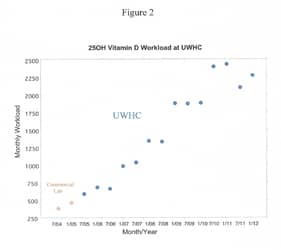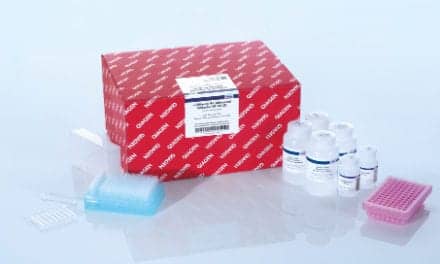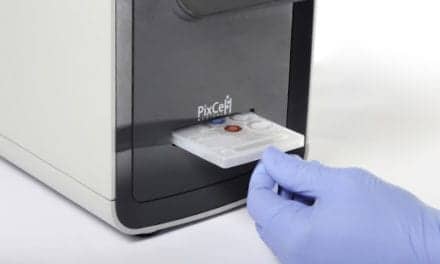Agendia Inc, Irvine, Calif, has announced the publication of a breast cancer study involving the company’s BluePrint 80-gene molecular subtyping test.1
A significant subset of patients diagnosed with early-stage estrogen receptor-positive (ER+) breast cancer appear to respond poorly to standard antiestrogen therapy, and may benefit significantly from the addition of chemotherapy to their treatment regimen. The recently published study suggests that use of the BluePrint test can more precisely predict tumor response to treatment as well as clinical outcome.
The study performed molecular analysis and clinical follow up of patients in the neoadjuvant breast registry symphony trial (NBRST) whose breast cancer was reclassified as ER+ basal-type (n = 91). The results of the analysis showed:
- ER+ basal-type patients were found to have sections missing from their messenger RNA (mRNA) for the estrogen receptor gene ESR1, rendering the translated estrogen receptor protein nonfunctional.
- ER+ basal-type patients experienced a far higher rate of pathologic complete response with neoadjuvant chemotherapy than did ER+ luminal patients (34% versus 5%).
- The 3-year outcomes for ER+ basal-type patients were comparable to those of ‘triple-negative’ breast cancer patients.
“Traditionally, the medical community has been challenged by a certain subtype of ER+ tumors that respond poorly to standard treatment,” explains Pat Whitworth, MD, director of the Nashville Breast Center and a coauthor of the study. “These ‘bad actors’ read out as ER+ on standard assays, even though their ER does not function well in the cell.
“This study shows that through diagnostic tools like BluePrint, we now have the ability to predict and identify how a tumor might respond to treatment that goes beyond traditional molecular classifiers, to seeing the fundamental biology of an individual tumor,” Whitworth adds. “This diagnostic step is critical to ensuring patients get the right treatment from the start, and helps drive better long-term outcomes.”
The NBRST study examined breast cancers categorized as ER+ by traditional immunohistochemistry techniques. In the recent study, researchers used the BluePrint test to perform molecular analysis of the breast cancers’ gene-expression patterns, and reclassified the ER+ breast cancers into one of three subtypes: basal, HER2, or luminal.
Out of the total patients examined, 13% of ER+ patients were reclassified as having basal-type breast cancer and were observed to have similar clinical outcomes and response to therapy as triple-negative breast cancer patients, a finding that typically indicates chemotherapy as standard treatment. Similar to patients with triple-negative breast cancer, ER+ basal-type patients experienced a six-fold increase in pathologic complete response to neoadjuvant chemotherapy compared to other ER+ patients, resulting in significant improvements in long-term outcomes.
“What we now understand is that a diagnosis of breast cancer may encompass up to a dozen distinct diseases, all with differing prognoses and treatments,” says William Audeh, MD, chief medical officer at Agendia. “This data offers additional clarity to the oncology community’s understanding of the complexity of breast cancer, and provides further data regarding this clinically important subset of ER+ cancers. Because routine pathology cannot reliably distinguish these cancers, identifying these ER+ basal-type cancers through subtyping with BluePrint provides valuable new information for the optimal management of early breast cancer.”
For further information, visit Agendia.
Reference
- Groenendijk FH, Treece T, Yoder E, et al. Estrogen receptor variants in ER-positive basal-type breast cancers responding to therapy like ER-negative breast cancers. NPJ Breast Cancer. 2019;5(15); doi: 10.1038/s41523-019-0109-7.




